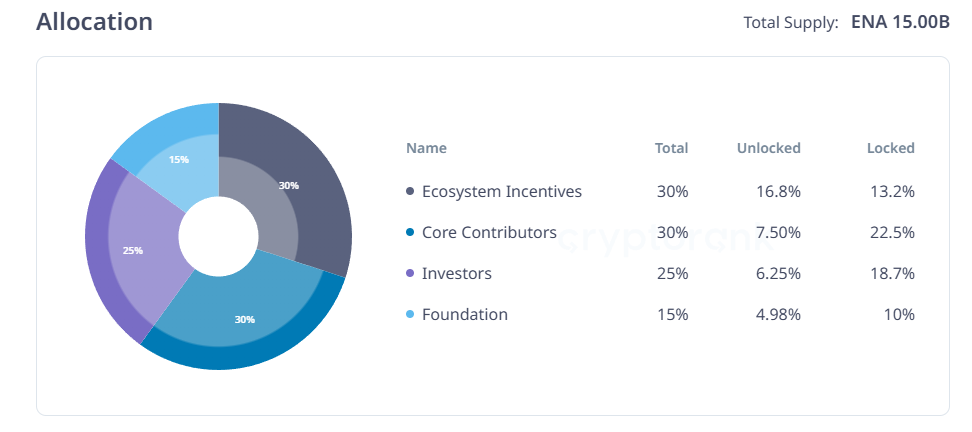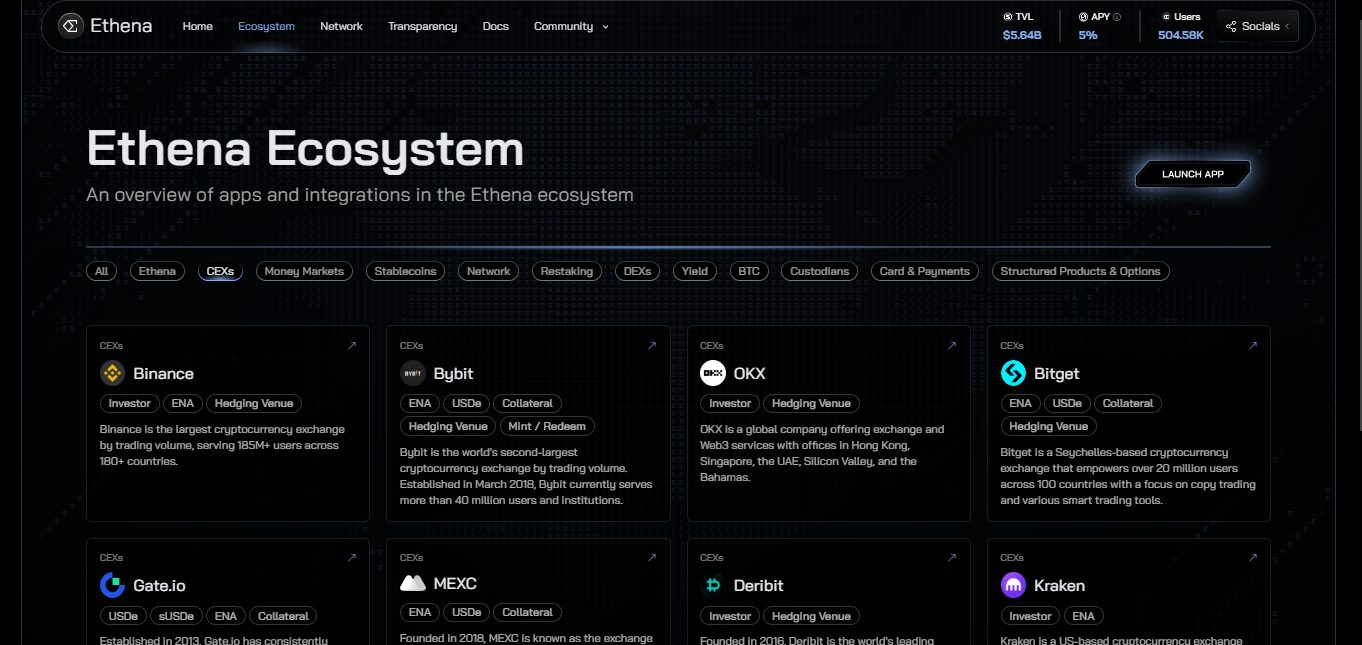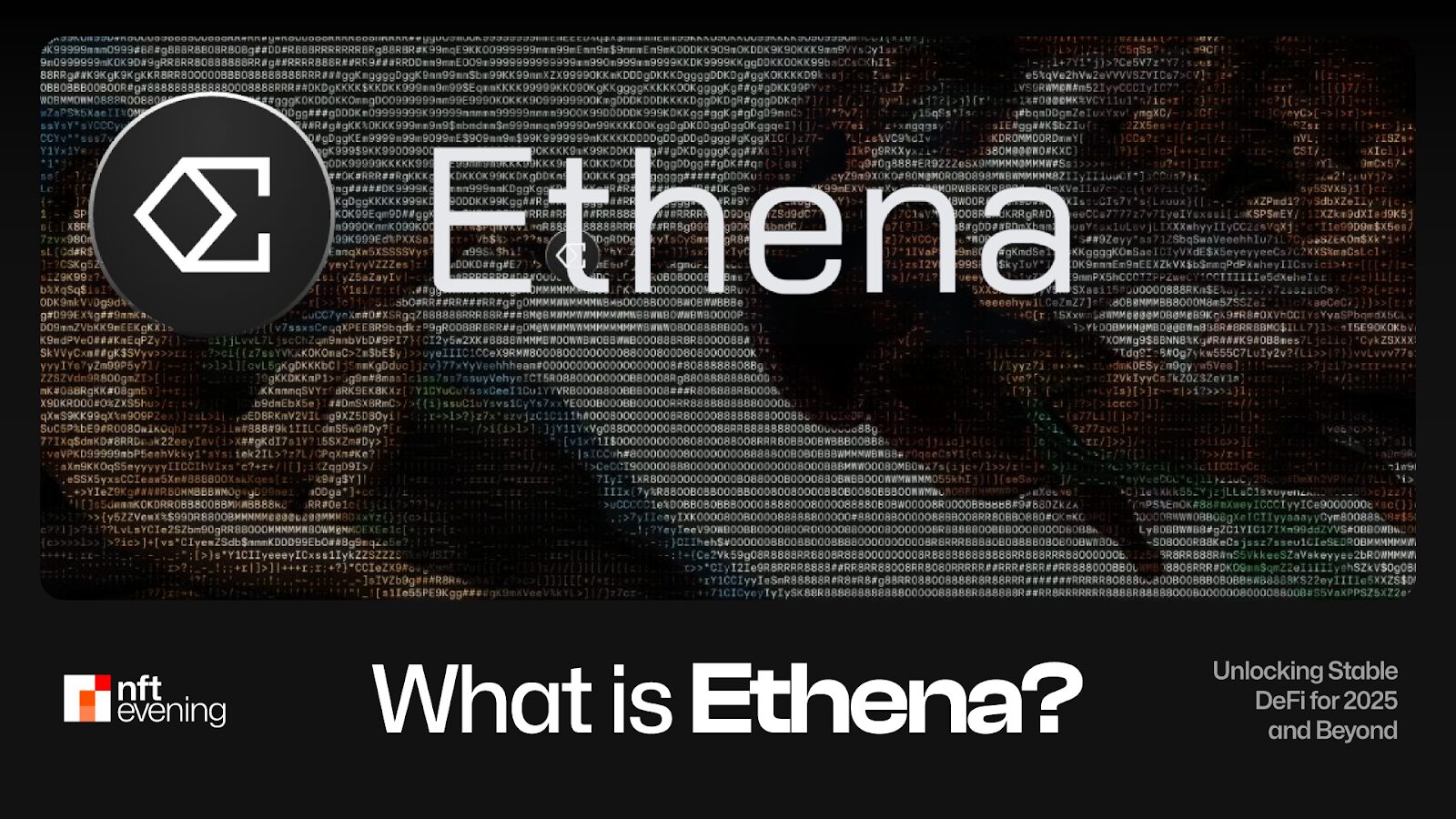The Ethena ecosystem is revolutionizing the stable DeFi landscape by integrating innovative oracle technology with synthetic dollar mechanics. In this post, we’ll dig into what exactly Ethena is, how it works, and its role in ecosystem development while exploring the benefits and risks associated with it and USDE. We’re also going to examine the ENA token’s utility and tokenomics, and why it’s a core driver for long-term growth and stability within the Ethena ecosystem.
What is Ethena?
Ethena (ENA) is a decentralized protocol that is designed to provide a safe digital currency solution. It creates a “synthetic dollar” environment, which gives users a stable medium that is similar to the US dollar but fully integrated into the DeFi space.
As part of the Ethena Foundation’s mission, the protocol helps mitigate price volatility and funding rate fluctuations through advanced mechanisms like delta hedging and short futures positions.

Ethena in WLFI Portfolio
Ethena is a flagship project in the WLFI Portfolio, recognized for its strong technical foundation and forward-thinking approach. The investment by WLFI highlights the protocol’s ability to create a stable, reliable digital currency solution that can interface with traditional financial systems while driving decentralized finance integration.

How does Ethena work?
Ethena operates by aggregating high-quality data feeds from multiple off-chain sources and delivering them securely on-chain through a decentralized network of validators. The protocol employs advanced smart contracts to ensure data integrity and rapid transaction settlement.
It creates a synthetic dollar environment through USDe, a stable medium designed to mimic the value of the US dollar while being fully backed by crypto collateral. This synthetic USDe dollar enables users to perform short positions and short futures positions efficiently, supporting both traditional banking products and innovative DeFi protocols.
What is USDe?
USDe is the stablecoin component of the Ethena ecosystem, designed as a synthetic dollar to provide a reliable digital currency solution. USDe maintains a stable value through collateralization and smart contract governance.
How do you use USDe?
Purchasing USDe
Users can purchase USDe on supported exchanges or through integrated gateways. This offers an efficient alternative to traditional banking systems, enabling immediate access to a synthetic dollar for everyday transactions.
Minting and Redeeming USDe
USDe can be minted by locking crypto assets as collateral, creating a synthetic digital asset pegged to the US dollar. Redemption reverses the process, returning collateral to the user.
Staking USDe
By staking USDe, users earn yields while contributing to network security. Staking rewards are distributed in widely accepted crypto assets, providing an attractive option for investors looking to earn passive income in the crypto space.
Benefits of Ethena
- Low volatility ensures predictable trading and payments
- Decentralized oracles and robust smart contracts guard against manipulation
- Seamlessly combines oracle technology with DeFi, enabling versatile applications
- Rewards mechanisms support participation and long-term growth
Risks of Ethena & USDe
- Code bugs or exploits could compromise funds
- Competition and integration hurdles may slow growth
- Changing regulatory frameworks could alter the industry rapidly
The ENA token
Utility
- Governance: ENA enables decentralized decision-making by allowing token holders to propose and vote on strategic changes to the Ethena protocol.
- Staking & Rewards: Users can stake ENA (or even USDe) to earn dynamic APY rewards, reinforcing network security and long-term commitment.
- Transaction Fees: ENA is used as the native currency for paying transaction fees, reducing operational costs and ensuring smooth service delivery across the ecosystem.
Tokenomics
Total Supply: 15 billion ENA tokens
As of March 2025, ENA’s market cap was approximately $1.64 billion, with a circulating supply of 1.425 billion tokens, reflecting its growing adoption in decentralized finance and stable digital asset solutions.
Token Distribution
- Core Contributors: 30% of the total allocation, locked with a 1-year 25% cliff and then released linearly over 3 years.
- Investors: 25% of the tokens, subject to the same vesting schedule as core contributors.
- Ethena Foundation: 15% allocated to support initiatives that widen the reach of USDe and reduce reliance on traditional banking systems.
- Ecosystem Development & Airdrops: 30% reserved for community incentives, including an initial 10% airdrop to reward early users and ongoing funding for cross-chain initiatives and exchange partnerships managed by a DAO-controlled multisig.

How to buy ENA
- Create an account on a supported crypto exchange, such as Binance, Coinbase or Gate.io.
- Complete the verification process required by the exchange.
- Deposit a supported cryptocurrency or fiat currency.
- Locate the ENA trading pair and place a buy order.
- Transfer your purchased ENA tokens to a secure wallet.

How do you store Ethena?
- DEX Wallets: Some decentralized exchanges offer integrated wallet solutions that let you store and manage ENA tokens directly on-chain. This option allows you to interact with DeFi protocols while maintaining full control over your private keys.
- CEX Custody: Centralized exchanges provide wallet storage for convenience, but these wallets hold your tokens for you, which means you relinquish control over private keys.
- Hardware Wallets: For enhanced security, store ENA tokens offline using devices like Ledger or Trezor to protect against hacks.
- Software Wallets: Dedicated wallets such as MetaMask, Trust Wallet, or multi-chain wallets offer robust interfaces for managing your ENA tokens securely.

Final thoughts
By providing a stable medium through USDe and a powerful native token in ENA, Ethena offers investors and users a reliable digital currency solution that bridges traditional financial systems and innovative blockchain technology. Its sophisticated integration of delta hedging, short positions, and smart contract-driven security measures positions it as a leader in the crypto space.
FAQs
Is Ethena a stablecoin?
No, Ethena is a protocol that incorporates a synthetic dollar (USDe) stablecoin and a native token in the same ecosystem.
What’s the difference between Terra and Ethena?
Terra focused on algorithmic stablecoins, whereas Ethena uses advanced oracle and collateral mechanisms to maintain stability and support decentralized finance.
Will Ethena collapse like Terra?
Ethena’s robust tokenomics, including delta hedging and proper collateral management, aim to mitigate risks and maintain long-term stability, reducing collapse likelihood.
Does Ena Coin have a future?
With strong utility in governance, staking, and fee payments, ENA is designed for long-term growth within the Ethena ecosystem, appealing to both investors and users.
How much is the ENA coin worth?
At the time of writing, March 7, 2025, 1 ENA is worth roughly $.44 according to data from CoinGecko.
What chain is Ena on?
ENA is implemented as an ERC-20 token on the Ethereum blockchain, ensuring compatibility with other crypto assets and integration with DeFi protocols.
Read the full article here

